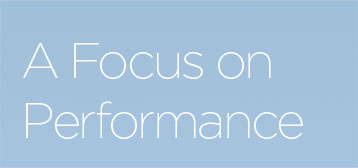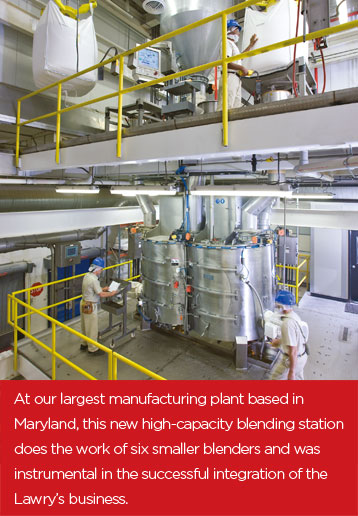


 We removed five days from our cash conversion cycle in 2008, followed by another five day reduction in 2009.
We removed five days from our cash conversion cycle in 2008, followed by another five day reduction in 2009.
 Progress with CCI led to $42 million of cost savings in 2009.
Progress with CCI led to $42 million of cost savings in 2009.
 In November 2009 the Board of Directors declared our 24th consecutive dividend increase."
In November 2009 the Board of Directors declared our 24th consecutive dividend increase."
Since 1999, sales have grown at a compound annual growth rate of 6%. During this same 10-year period, earnings per share, adjusted for a stock split, have grown at a 12% compound annual growth rate. For each of the past three years we have grown earnings per share at a double-digit pace. We are proud to have accomplished this level of increase during a period of volatility in both input costs and currency rates, as well as a difficult global economy.
While our strong brands, leading market position and motivated employees are important elements of this success, equally important is our effective and sustainable growth strategy – improve margins, invest in the business and grow sales and profit.
We are improving margins with a more favorable business mix and with aggressive cost reductions. In 2009 we completed a broad restructuring plan that has resulted in annual savings of $61 million. Increased productivity allowed us to reduce the number of major manufacturing facilities by 26% and increase sales per facility by 66% since the program began in 2005.
Ongoing cost savings are being realized in each region and function under our Comprehensive Continuous Improvement effort. Our achievements in CCI are reflected in all aspects of our business, but most notably in our supply chain. Our 2009 CCI results include supply chain initiatives focused on supplier collaboration, manufacturing continuous improvement, packaging optimization and raw material origin and formulation conversions. In 2009, cost savings reached $42 million, ahead of our initial goal of $30 million. At our facility in Dallas, a “washout” that used to take 12 hours has been reduced to six hours. Productivity on product samples at our Technical Innovation Center has increased 46%. These and other cost reductions allow us to increase our brand marketing, develop new products and fund other initiatives. It is our fuel for growth.
We set objectives not only to increase profit, but to reduce working capital. This modified measurement, called McCormick Profit, has been in place for two years. In both years we reduced our cash conversion cycle by five days, and in 2009 we generated $416 million of cash from operations. We are currently using cash to pay down debt from the Lawry’s acquisition, and through the end of 2009 have reduced our debt by $252 million. We have maintained a strong balance sheet and investment-grade credit rating despite the difficult economy.
Cash is also funding dividends. McCormick shareholders have been paid a dividend every year since 1925. Your Board has increased the dividend on a per-share basis for 24 consecutive years. We recognize our dividends as one more way to build value for our shareholders.
 Previous Page A Commitment to Sustainability
Previous Page A Commitment to Sustainability

